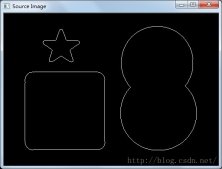string常用截取字符串方法有很多,但是配合使用以下两种,基本都能满足要求:
find(string strSub, npos);
find_last_of(string strSub, npos);
其中strSub是需要寻找的子字符串,npos为查找起始位置。找到返回子字符串首次出现的位置,否则返回-1;
注:
(1)find_last_of的npos为从末尾开始寻找的位置。
(2)下文中用到的strsub(npos,size)函数,其中npos为开始位置,size为截取大小
例1:直接查找字符串中是否具有某个字符串(返回"2")
|
1
2
3
4
5
6
7
8
9
10
11
|
std::string strPath = "E:\\数据\\2018\\2000坐标系\\a.shp"int a = 0; if (strPath.find("2018") == std::string::npos){ a = 1;}else{ a = 2;}return a; |
例2:查找某个字符串的字符串(返回“E:”)
|
1
2
3
4
5
6
7
|
std::string strPath = "E:\\数据\\2018\\2000坐标系\\a.shp"int nPos = strPath.find("\\");if(nPos != -1){ strPath = strPath.substr(0, nPos);}return strPath; |
例3:查找某个字符串中某两个子字符串之间的字符串(返回“2000坐标系”)
|
1
2
3
4
5
6
7
8
9
10
|
std::string strPath = "E:\\数据\\2018\\2000坐标系\\a.shp"std::string::size_type nPos1 = std::string::npos;std::string::size_type nPos2 = std::string::npos;nPos1 = strPath.find_last_of("\\");nPos2 = strPath.find_last_of("\\", nPos1 - 1);if(nPos1 !=-1 && npos2 != -1){ strPath = strPath.substr(nPos2 + 1, nPos1 - nPos2 - 1);}return strPath; |
提高:递归获取路径名中的子目录
|
1
2
3
4
5
6
7
8
9
10
11
12
13
14
15
16
17
18
19
20
21
22
23
24
25
26
27
28
29
30
31
|
//获取路径名中的子目录:strPath为路径名,strSubPath为输出的子目录, nSearch为从尾向前检索的级别(默认为1级) bool _GetSubPath(std::string& strPath,std::string& strSubPath, int nSearch){ if (-1 == nSearch || strPath.empty()) return false; std::string::size_type nPos1 = std::string::npos; nPos1 = strPath.find_last_of("\\"); if (nPos1 != -1) { strSubPath = strPath.substr(nPos1 + 1, strPath.length() - nPos1); int nNewSearch = nSearch > 1 ? nSearch - 1 : -1; _GetSubPath(strPath.substr(0, nPos1), strSubPath, nNewSearch); } return true;} int main(){ std::string strPath = "E:\\数据\\2018\\2000坐标系\\a.shp"; std::string strSubPath = ""; if(_GetSubPath(strPath, strSubPath, 1) { printf(“返回'a.shp'”); } if(_GetSubPath(strPath, strSubPath, 2) { printf(“返回'2000坐标系'”); }} |
以上所述是小编给大家介绍的C++ string常用截取字符串方法详解整合,希望对大家有所帮助,如果大家有任何疑问请给我留言,小编会及时回复大家的。在此也非常感谢大家对服务器之家网站的支持!














